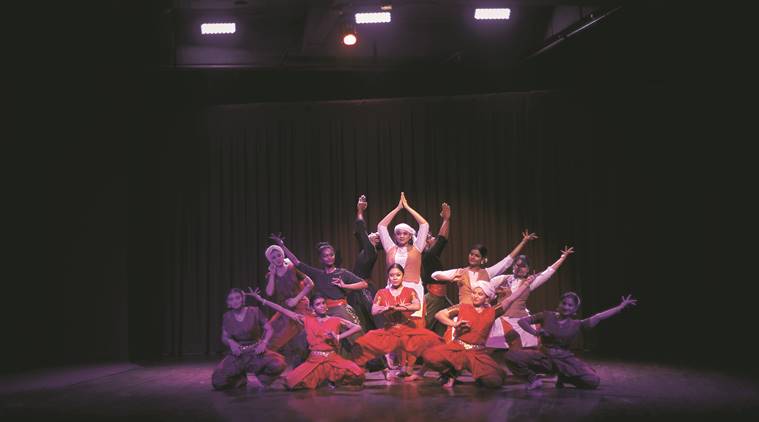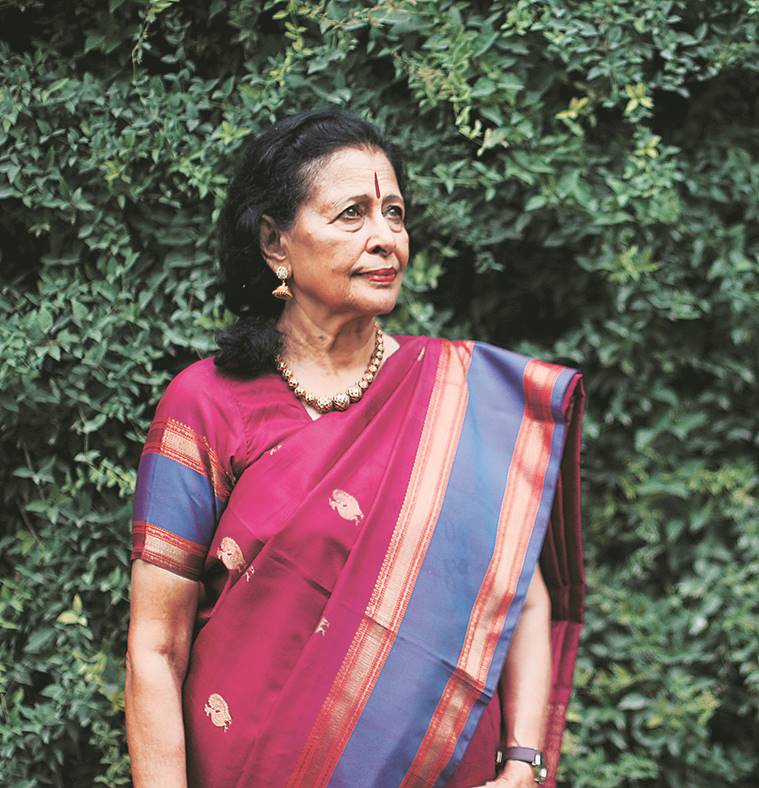Seeking Refuge in Dance
Bharatanatyam guru Saroja Vaidyanathan’s disciples will depict the plight of refugees in India

Saroja Vaidyanthan’s disciples performing
On Sunday morning, Bharatanatyam dancers of Delhi’s Ganesa Natyalaya stepped into Triveni auditorium, chit-chatting while waiting for their guru, Padma Bhushan Saroja Vaidyanathan, for the dress rehearsal of today’s event organised by United Nations High Commissioner for Refugees, India.
Guruji arrives. She beckons the girls to the green room. The hall is stuffy. The rehearsal venue is for free, but an hour of air-conditioning would cost Rs 6,000, so they choose to dance in the heat, with sweat dripping. Seated in the front row, Vaidyanathan, 80, in her soft mellifluous voice, and a clap of her hands, instructs the girls on stage, “Laxmi, face the audience. Mithila, move to the right.” The 20-minute piece is a contemporary fusion of Bharatanatyam and chhau (presented by Bhavini Misra’s disciples from Urshilla Dance Company).
Guruji arrives. She beckons the girls to the green room. The hall is stuffy. The rehearsal venue is for free, but an hour of air-conditioning would cost Rs 6,000, so they choose to dance in the heat, with sweat dripping. Seated in the front row, Vaidyanathan, 80, in her soft mellifluous voice, and a clap of her hands, instructs the girls on stage, “Laxmi, face the audience. Mithila, move to the right.” The 20-minute piece is a contemporary fusion of Bharatanatyam and chhau (presented by Bhavini Misra’s disciples from Urshilla Dance Company).
“It’s more theatre, acting, than pure Bharatanatyam,” says Ankita Kaushik, 23, Vaidyanathan’s disciple of 17 years.
Clad in red saris, Bharatanatyam dancers enter the stage to Vaidyanathan’s composition Swaranjali, making kataka mukha, tripataka and alapadma mudras, depicting a happy family involved in daily chores, when they are attacked by terrorists (chhau dancers, in black and moss green). The music changes to devi stotram. Then come the rescuers (NGO workers, in white kurtas and mustard dhoti-pants), with simple pataka mudra. The dim lights turn bright, and gloomy shehnai notes change to saxophone. After sightseeing — “a temple, mosque, church, sea, tall buildings” — and with peace restored in home country, it’s time to return. The refugees, scared and unwilling, are assured of safety. The last dance brings them together in Dhanashri thillana.
“I could have elaborated each piece, but didn’t know what impression the audience would get. So, I have balanced the positives and negatives,” says Vaidyanathan, adding, “I’m a pure classical dancer. I do contemporary sometimes. But this is the first time I’m doing something like this. So, I took on the challenge.”
“The event is part of UNHCR’s global #WithRefugees 2016 campaign to demonstrate public solidarity with refugees and encourage governments to take action,” says Ipshita Sengupta, policy associate, UNHCR India. “There are 39,000 refugees/asylum-seekers registered with us, mainly from Afghanistan and Myanmar, and in smaller numbers from Middle East and Africa. Almost half of them are living in Delhi/NCR,” she adds.
The evening will also see refugee youth groups perform their traditional folk forms — attan by Afghan and dhaanto by Somali refugees. Attan, the national dance of Afghanistan, from Pashtun region, traditionally sees men moving in whirls to groovy, catchy music. Coordinating the dance is Nigin Chamtoo, 24, who moved out of Kabul, with her parents and two brothers, a year back for security concerns. She now lives in Tilak Nagar and is pursuing an accounting course. She has earlier presented Afghan qarsak dance at a deaddiction centre in Delhi.
Hanan Waz, 15, will be performing dhaanto, the sound of which is very similar to, and perhaps, predates reggae. “Dhaanto comes from Ogadenia (Somali Region of Ethiopia), and mimics a camel’s movements. Unlike the popular view that Somalia is a conservative country, men and women traditionally dance together to celebrate,” says Sengupta. The Ethiopian switches to Hindi, a language she speaks fluently in, having picked it up at an Indian school in Saudi Arabia, before the family was forced to move to Somalia, where her elder sister died and father never returned home. Waz, who moved with her mother and two sisters to India, four years ago, studies in Class VIII, in a school in Nehru Vihar.
Vaidyanathan’s message is clear: “Ultimately, once peace is restored, the refugees have to return to their country, get back to their daily life and chores.” But “not against their will,” adds Sengupta.
The chirpy refugee girls love the safety, freedom and acceptance they get in India, but it is Bollywood they dote on. While Chamtoo wishes that Bollywood gets to know about traditional Afghan dances, Waz says, in 2015, actor John Abraham did come to see the Somalian refugees present dhaanto.
On 7 August, 6.30-7.30 pm, at Triveni Kala Sangam, Delhi. Entry by invitation only
For all the latest Lifestyle News, download Indian Express App






















 Saroja Vaidyanthan
Saroja Vaidyanthan
No hay comentarios:
Publicar un comentario